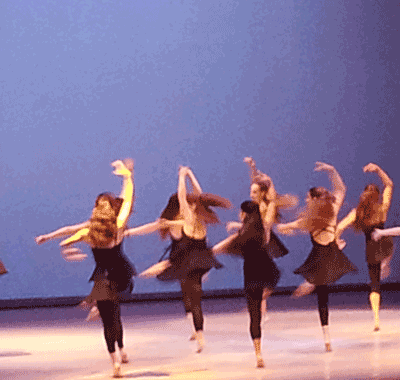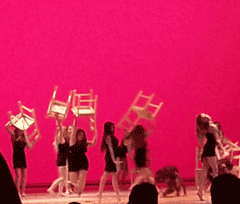Great Local Lighting, And A Little Broadway History
I attended a local amateur dance concert in Rockland County, New York, and was impressed by the lighting. The quality of the lighting in smaller productions is often pretty uneven but in this one it was excellent and deserves a little recognition for a number of reasons.
This production was lit by Allan Seward who is a pro who lights many productions and events in the NY and NJ area.

The stage was nicely lit, bright and even with no dark spots, but what I noticed most was the lighting of the cyc. First, it was tightly stretched with no wrinkles. That’s not easy and is often overlooked in smaller productions. Second, the lighting of the cyc was completely even from top to bottom and from right to left. Most cyc lighting falls off severely on the bottom where the throw is the longest (no ground row was used here) and where the bounce of the stage light tends to wash it out. The cyc in this production was as well lit as would be seen an a New York dance venue like the Joyce Theatre.

My first thought when I saw the cyc lighting was that it was being done with LED fixtures like Color Kinetics ColorBlaze or one of the many copies of that fixture like the Chroma-Q Color Force or one of the imports like Elation. I was curious enough to contact Allan and ask how he did it. My guess was way off! Allan lit this cyc with a very traditional setup of Altman Sky Cycs (1K T-3 fixtures) with gel (R120 Red Frost, R121 Blue frost, and R22+R119 Deep Amber and diffusion).
This reminded me of another period of great change in theatre lighting in the mid to late 1970s when lighting control on Broadway was changing from “piano boards” (resistance dimmers) to computerized memory consoles. When lighting people attended shows as audience members they tried to guess whether the show was running on piano boards or computer boards. I remember seeing a production of Shenandoah on Broadway (lighting by Tom Skelton) that had an incredibly beautiful sunset cue on the cyc, and thinking “There is no way that was done on piano boards.” I was wrong of course. It wasn’t done by pushing a button on a computer to exactly reproduce the cues every show. It was done with three experienced electricians running six piano boards pulling levers and using their hips, elbows, and knees to produce great lighting eight shows a week. The piano board era ended soon after and within a few years they vanished like dinosaurs.